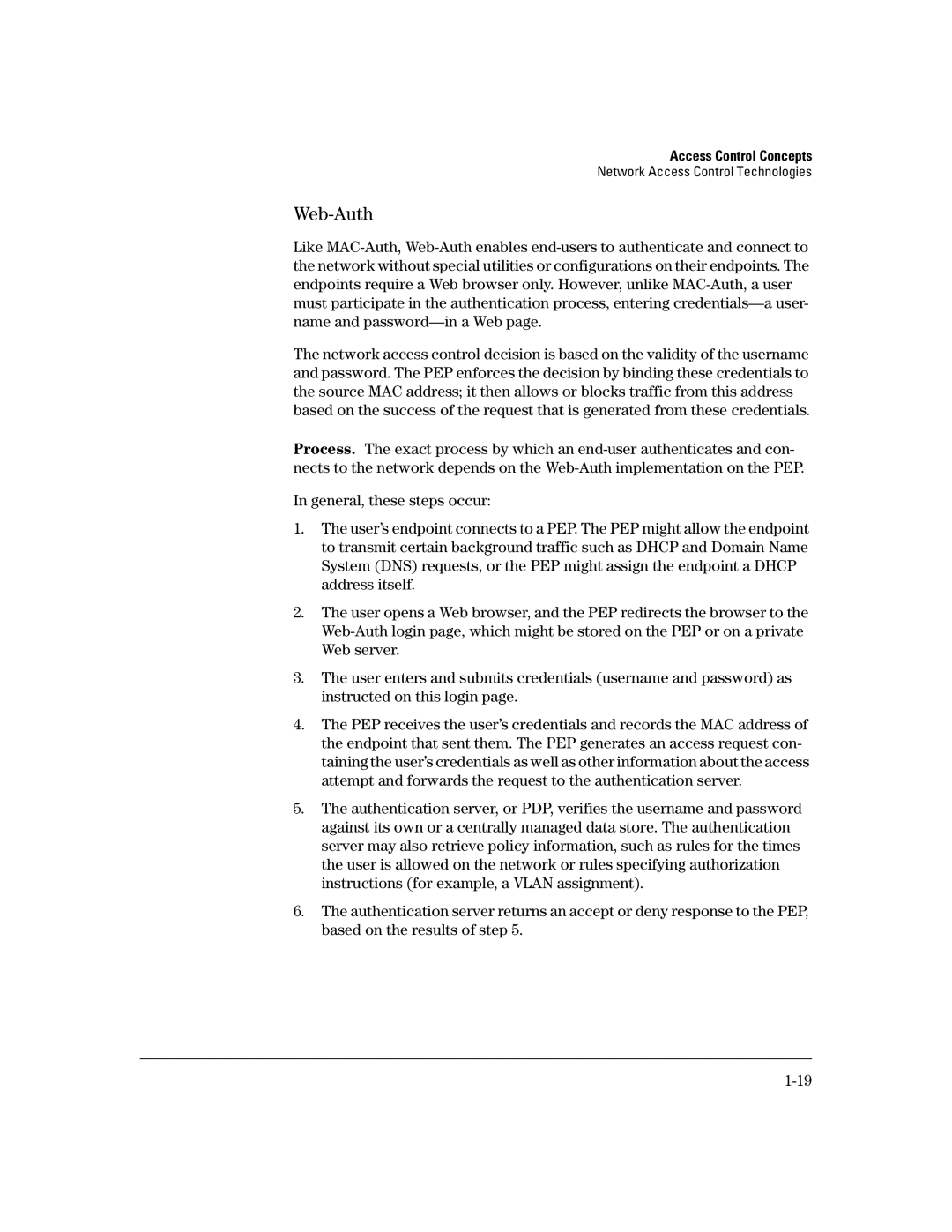Access Control Concepts
Network Access Control Technologies
Web-Auth
Like
The network access control decision is based on the validity of the username and password. The PEP enforces the decision by binding these credentials to the source MAC address; it then allows or blocks traffic from this address based on the success of the request that is generated from these credentials.
Process. The exact process by which an
In general, these steps occur:
1.The user’s endpoint connects to a PEP. The PEP might allow the endpoint to transmit certain background traffic such as DHCP and Domain Name System (DNS) requests, or the PEP might assign the endpoint a DHCP address itself.
2.The user opens a Web browser, and the PEP redirects the browser to the
3.The user enters and submits credentials (username and password) as instructed on this login page.
4.The PEP receives the user’s credentials and records the MAC address of the endpoint that sent them. The PEP generates an access request con- taining the user’s credentials as well as other information about the access attempt and forwards the request to the authentication server.
5.The authentication server, or PDP, verifies the username and password against its own or a centrally managed data store. The authentication server may also retrieve policy information, such as rules for the times the user is allowed on the network or rules specifying authorization instructions (for example, a VLAN assignment).
6.The authentication server returns an accept or deny response to the PEP, based on the results of step 5.
